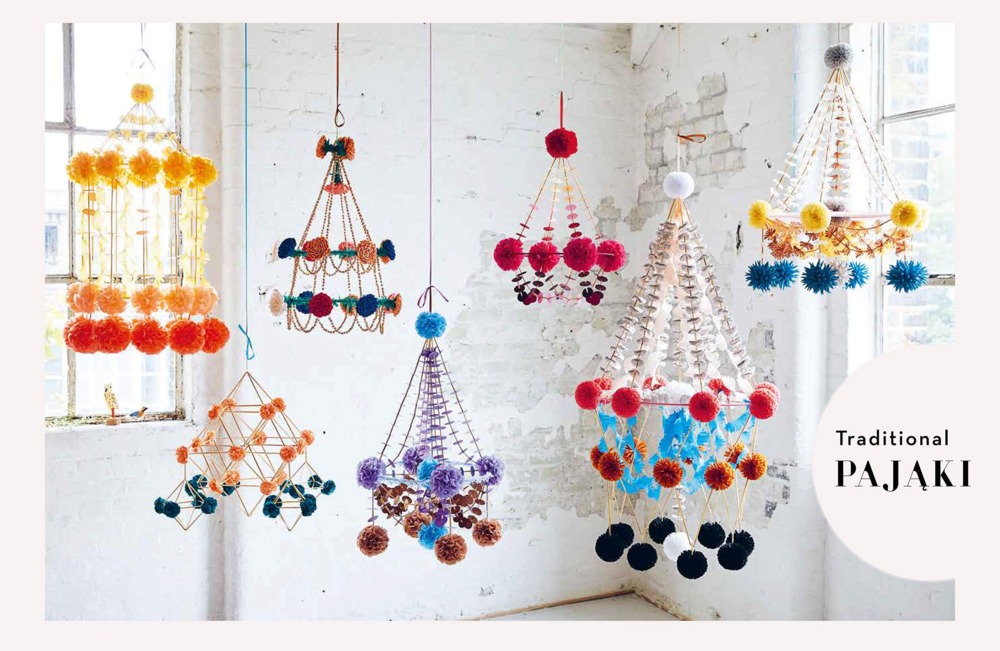Thank you for visiting!
It can be difficult to recreate the “old country” here in the U.S., especially if you hope to impress your children and older relatives at the same time. “Pająki” (pronounced pah-YONK-ee) are no exception. A “Pająk” (pah-Yonk) is a Polish folk craft, a sort of a colorful chandelier-style mobile, typically seen around Europe, especially in Poland, often during the major holidays. They’re typically quite fragile and, while I’ve seen them made from a range of different materials, they have an internal logic all their own, including what is an appropriate design or material — or not. I’d hate for all my work to be disdained by those I made them for. So, facing that pressure (mostly from myself), I was delighted to find this Bible of sorts to the craft and styling of both traditional and modern interpretations of “Pająki.”
The first chapter, Making a Pająk, offers helpful introductory guidelines including materials and tools, structure, wrapping a basic hoop, wrapping a fringe hoop, and arm types. The second chapter continues the introduction with the basics, and is titled The Pompoms. The chapter includes eight different styles, with lots of photos to make beautiful pompoms easily and with minimal mistakes. After that, there are two large sections — one on traditional pająki, and the other on contemporary pająki. After that, there is a section on templates, and another listing suppliers — which was a big help for me to get started. The book itself is beautiful, with a durable hardbound binding, luxuriously thick paper, and vivid color printing — very important in a book focused on such a colorful craft.
Plentiful photos and clever design help make the book as engaging as it is helpful. I made traditional and modern Pająki for a recent family get-together, and not only did I hear no complaints, but I did hear lots of oohs and aaahs. It helped bring us together. I truly appreciate this beautiful book’s helpful and clear guidance.


